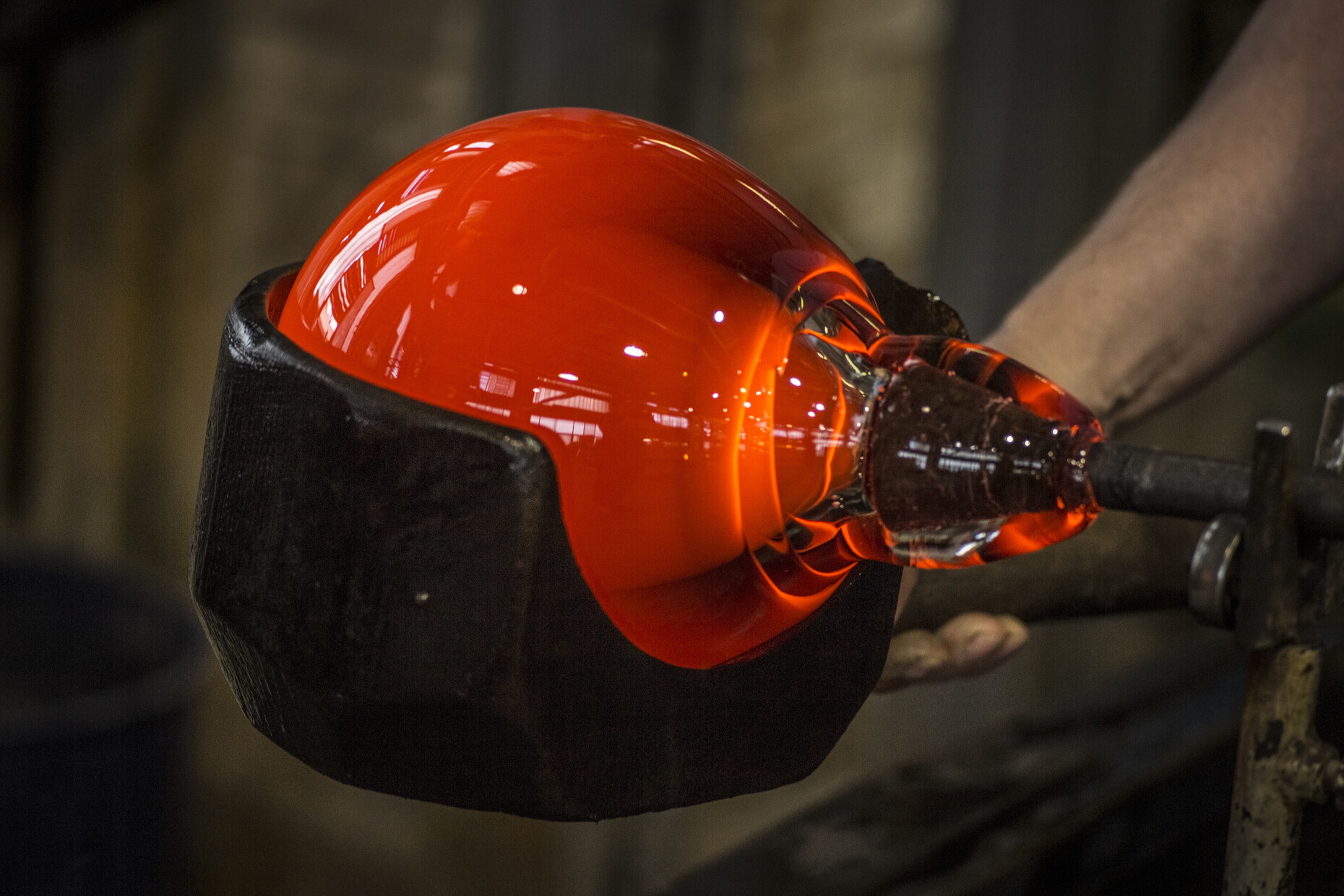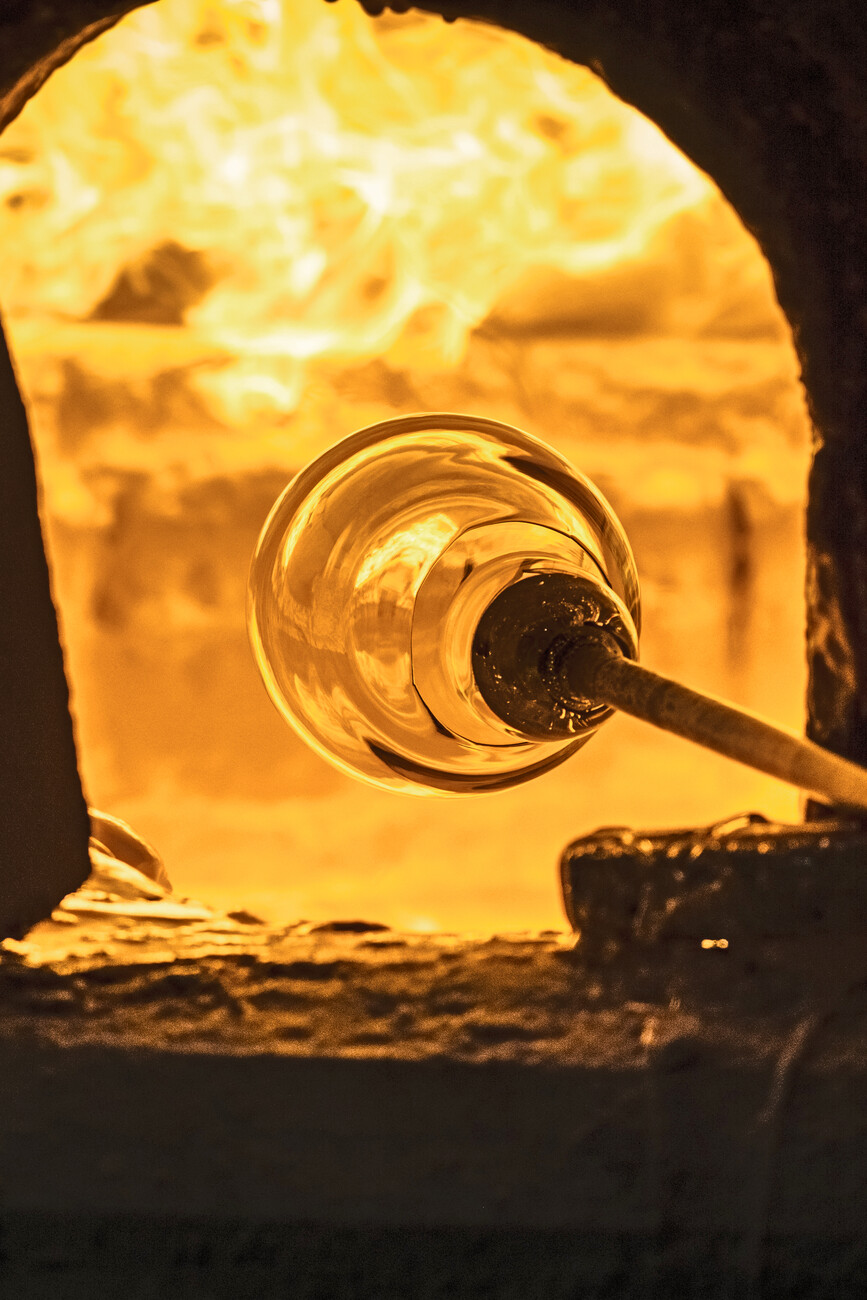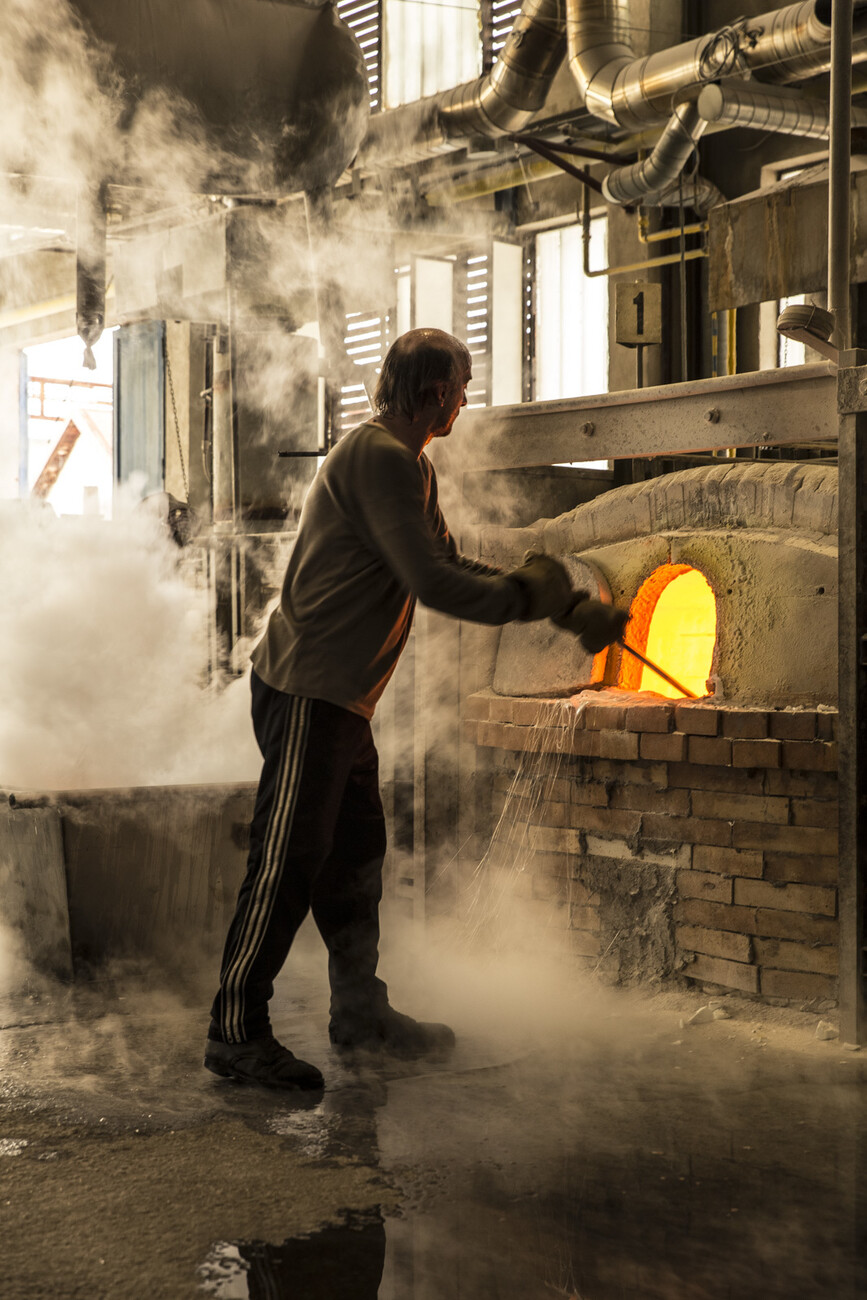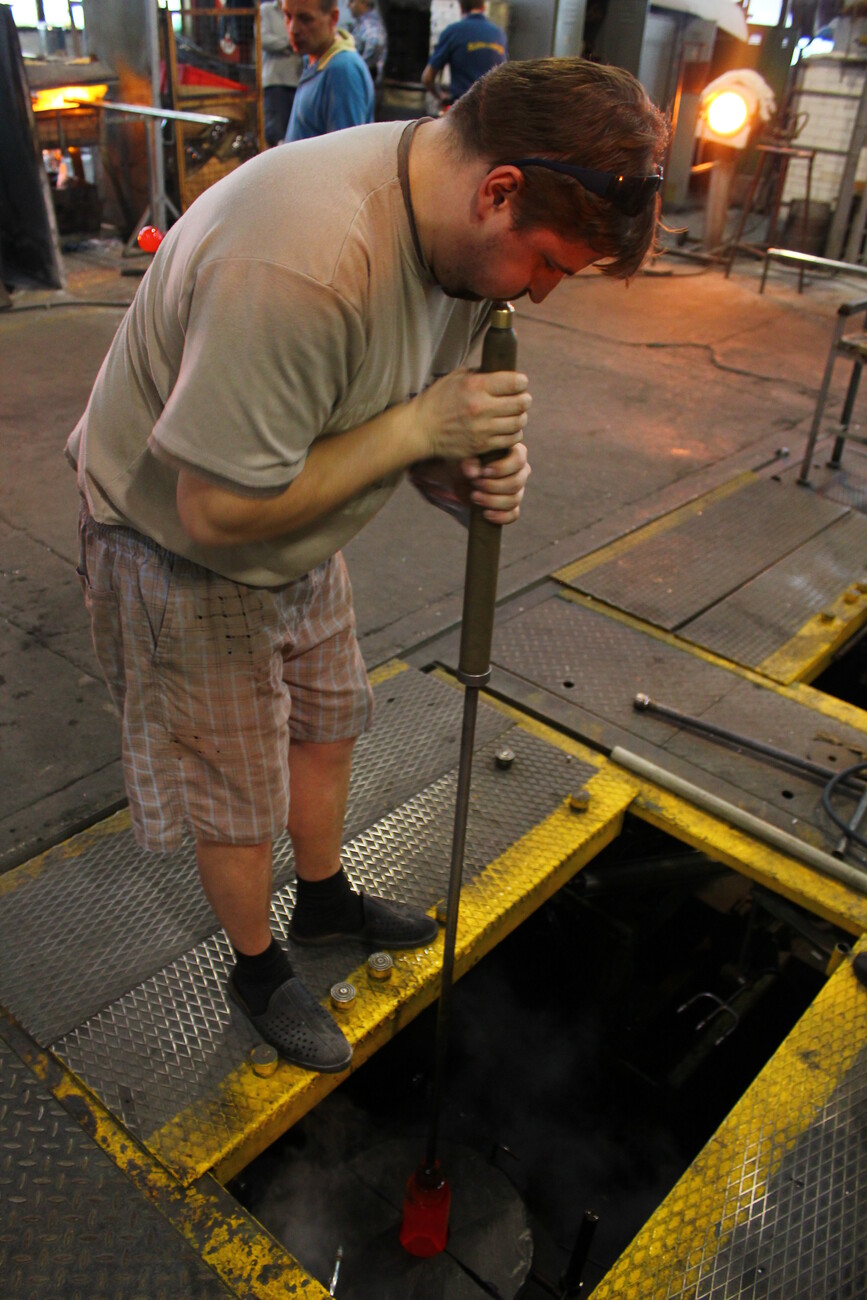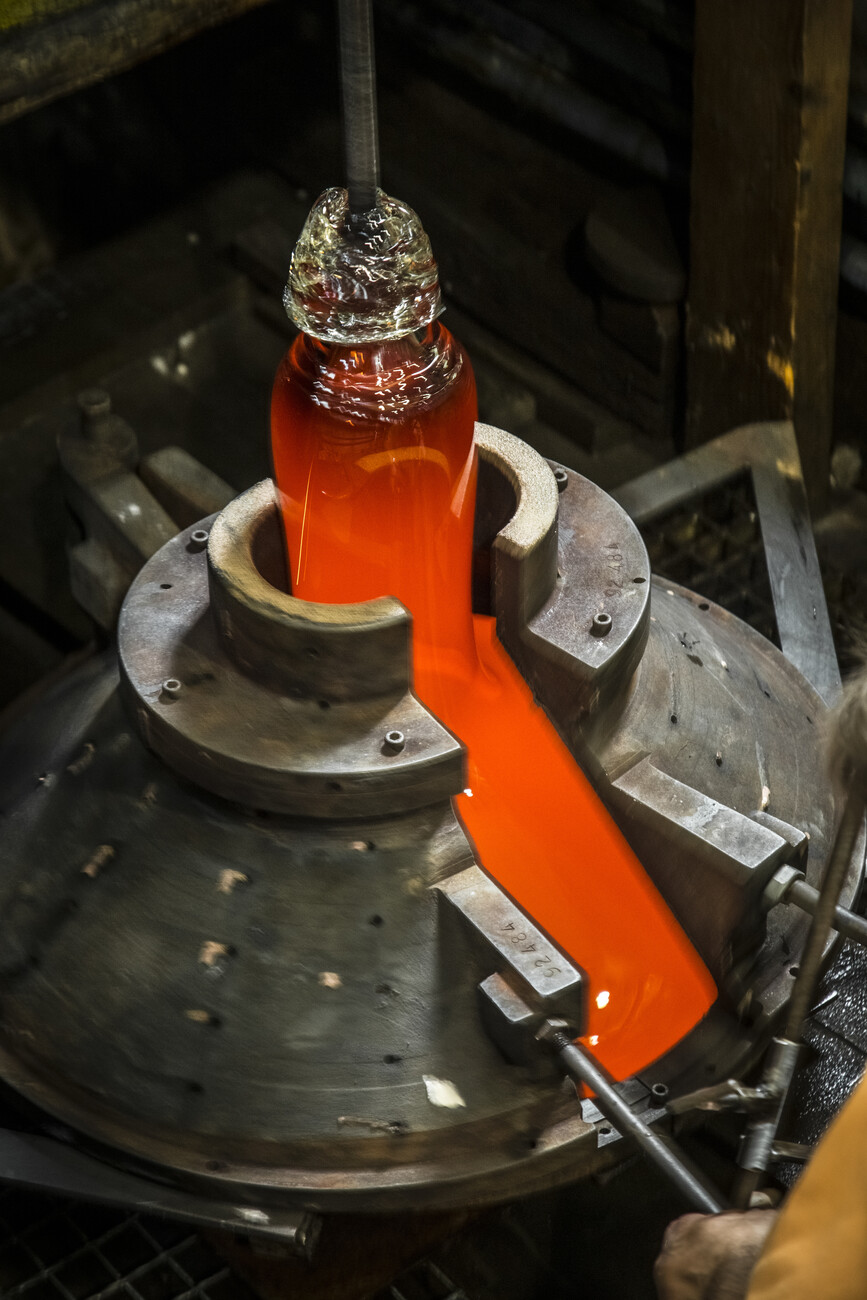Breathe out slowly
Somehow, today everything seems to revolve around the past. There’s hardly a new hotel that opens without design classics from the 1950s, bars and restaurants even go for the 1920s. At recent furniture fairs, the trend has been re-edition, vintage or retro – and it was clear that the current zeitgeist is yesteryear. There’s a reason for this, as the more complex the technology and all the frills attached, the more helpless we consumers find ourselves standing staring at the product. At the same time, this awakens in us a yearning to “understand”. It is no coincidence that the market for one-off items, hand-made objects and artisanal pieces is booming. Fully in line with the myth of the good old days and the wish for things to slow down and for leisure. So what does Czech company Brokis have to do with all this? The makers of handblown luminaires achieve a daring synthesis of traditional production technology and highly contemporary lighting.
As part of the wave of privatization in the Czech Republic, in 1997 entrepreneur Jan Rabell acquired the Janštejn Glassworks, which had first seen the light of day at the beginning of the 19th century – and around 140 kilometers southeast of Prague. Originally it made glass for windows, vases, glasses and later glass cylinders for petroleum lamps, and it remained in production bar the years of the two world wars. With electrification and globalization, the glass-blowers were soon producing lampshades and luminaire bodies for about 100 lighting companies, including quite a few of the renowned Italian manufacturers.
Jan Rabell initially intended simply to buy the company, return it to profit, and sell it again. But then his passion for glass got in the way of things: “I find the vibrancy of the material quite fascinating and it offers incredible opportunities,” he says. Rabell retained the glass-blowing workshop, made technological adjustments to it in order to modernize the production system, and introduced new furnaces. He then set about revamping the production line, focusing above all on upholding the knowhow the company and its staff had accumulated down through the decades. His mix of artisanship, optimized manufacturing processes and design culminated in 2006 in the foundation of the Brokis brand.
The hand-blown luminaires debuted in 2010 with the still bestselling “Muffins” and “Balloons” models by Lucie Koldova (now Art Director at Brokis) and Dan Yeffet – and “Memory” by Boris Klimek. Since then “Capsula”, “Shadow”, “Flutes”, “Nightbirds” and many other designs have been floated, as transparent as they are fragile. Nothing about these perfect items reveals that they first see the light of day in a rough-and-tumble workshop environment, and yet that is precisely their key quality. The process of manufacturing the luminaires involves a lot of heat, a truly impressive amount of background noise, and the substantial weight of the glassblowing rods – one reason why glassblowing at Brokis is only handled by men. In the furnaces, the molten glass reaches a temperature of about 1,400°C, and it gets blown into the right shapes at a temperature of about 700°C before cooling to approx. 550°C.
The blowing process for the relatively large glass objects requires that the breath be blown relatively evenly as an interruption would cause air bubbles and other sullies in the body. This, too, is a reason for only relying on men, as they have a larger lung capacity. Once the glass elements have cooled and been ground and polished, they are assembled. “For our luminaires in most cases we rely on a combination of glass and materials such as wood, brass or copper,” explains Lucie Koldova. “The contrast superbly underscores the brilliant properties of the glass, which has a volume at the absolute maximum that can be blown.”
The latest Brokis product, “Knot”, playfully exhibits exactly this sense of contrast. It was designed by the Venetian duo of Chiaramonte Marin (they are widely considered adept luminaire designers), who submitted six ideas to Brokis, with the first being realized in 2016. The pendant light, which is available in four different shapes and in several different color variants, features the hand-blown glass attached to a cord made of coarse natural fibers. It is almost as if a knot in the cord draws the base of the glass body inwards and bears the weight of the luminaire. Yet the actual fastening is concealed in the refined metal hood, beneath which the LED lighting media are concealed. “Pur”, the model created by Lucie Koldova, seeks to excite not by juxtaposing materials but by contrasting shapes. Horizontally and vertically positioned tubes and small bell-like lamps together form an impressive pendant luminaire, one that also toys beautifully with the interaction of matte and gloss finishes for the glass.
Often something which looks simple is actually very complicated. And this is certainly true of the Brokis luminaires. No less than about 30 persons have handled each object and worked on it before it counts as “finished”. If you watch the glass-blowers go about their tasks in the works hall with its (retro-) Eastern bloc charm, then you can sense their price, their self-confidence in their abilities and their dedication to glass as their material. You certainly look at your luminaire through different eyes if you know the conditions under which it was made. Thanks to makers like Brokis tradition and trends can blend in a contemporary manner: Craftsmanship is back – in the guise of 21st century design.
